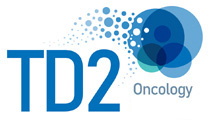Quantification of Regulatory T Cells in Mouse Tumor Specimens Using Flow Cytometry

Regulatory, or suppressor, T cells (Treg) are a subpopulation of CD4+ T lymphocytes which are defined by the expression of forkhead transcription factor (FoxP3). All T cells come from progenitor cells in bone marrow, with differentiation happening in the thymus. Treg cells are not mature until a couple days later than effector T cells, which take about three weeks to mature. Before they are differentiated, cells receive signal from the self-peptide MHC complex. When there is little signal, T cells become effector T cells, whereas, a medium signal will produce Treg cells. If the cell is overwhelmed with signal, it will undergo apoptosis and die.
Treg cells are known to play a key role in modulating the immune system, maintaining tissue homeostasis, and preventing autoimmunity. Alteration in Treg function and homeostasis has been associated with autoimmune diseases, chronic infection, cancer, and ultimately contributes towards poor prognosis. It is well established that accumulation of Tregs in murine and human cancer tissues results in immune suppression and tumor progression. This is largely because most tumor-associated antigens are self-antigens that are over-expressed in tumors. Tregs identify them as self antigens and limits the immune response against these targets. Therefore, Tregs are a major hurdle in cancer immunotherapy and it is under extensive investigation. However, Treg functionality has been difficult to evaluate due to low cell abundance (5-10% of peripheral CD4 T cells) and lack of generic markers across species. In order to understand the role of Tregs in tumors, robust methods are required for the identification and characterization of these cells.
Flow Cytometry has the ability to rapidly and accurately measure individual targets/receptors using fluorescent tags in specific cell populations. Simultaneous detection of multiple biomarkers and the ability to examine rare cell populations makes flow cytometry a reliable technique for clinical studies, particularly in drug development. For this reason, flow cytometry can be a powerful platform for quantification of Tregs. In the recent years, flow cytometry methodology has been widely established in both drug development and basic research laboratories for detection of Tregs. However, the multitude of Treg markers, the low cell abundance of this population, the stringent staining protocol and complex gating strategy makes it a challenging task to analyze Tregs.
At Flow Contract Site Laboratory, we routinely test for Tregs in clinical, pre-clinical and non clinical samples. Characterization is often achieved by using a combination of two or more Treg associated markers such as: CD4+, FoxP3+, CD25+, CD127low/– and CTLA+. We have developed and validated the most optimum staining conditions for sample preparation. We ensure that fresh whole blood samples are processed within 48 hours post draw (in house validated range) and that the samples are shipped to us in appropriate conditions. Minor changes in such conditions can have great impact on the data quality. We take pride in our ability to process such critical samples with great consistency and accuracy. Last but not least, our antibody panels and gating strategies are custom designed to provide the most accurate data that will allow association between specific clinical outcome and Tregs.

Tregs-figure-1 https://www.immunology.org/public-information/bitesized-immunology/cells/regulatory-t-cells-tregs
Here, we present data from a simple exploratory study that was performed to investigate whether expression of FoxP3, a transcription factor that is expressed in Tregs in humans, could be used to identify Tregs in mouse tumor specimens. In this study, cells were dissociated from 4T1, CT26 or PAN02 murine tumors and stained with surface markers; anti-mouse CD45-APC and anti-mouse CD3-FITC, followed by intracellular staining with anti-mouse FoxP3-PE. Expression of FoxP3 in Tregs was evaluated by flow cytometry analysis on a BD FACSCanto™ II equipped with BD FACSDiva™ software. These tumors were chosen because they all have strong similarities between the mice and human tumors. The 4T1 tumor is akin to stage IV breast cancer in humans, and is from the mammary gland of the mouse. CT26 is a grade IV, readily metastasizing, and easily implantable colorectal carcinoma frequently used to investigate cytotoxic agents. PAN02 is a tumor akin to pancreatic ductal adenocarcinoma, which is one of the most deadly forms of cancer, causing approximately 40,936 deaths a year.
We observed that PAN02 and CT26 tumor cells have higher MFI for FoxP3-PE than their isotype control and 4T1 tumor cells (Fig.1). The percentage of regulatory T cells, determined by FoxP3+ staining, was also higher in PAN02 and CT26 cells than 4T1. Overall, this study has shown that FoxP3 intracellular staining can be successfully used to identify regulatory T cell population in mouse tumor models.

Figure 1: Representative histogram overlay of FoxP3-PE or Isotype control stained cells. Both CT26 and PAN02 show higher fluorescence intensity for FoxP3-PE than their respective isotype controls. No significant difference was observed in 4T1 tumors.

Figure 2: The results showed that the relative percentage difference between mean MFI of FOXP3-PE and MFI of isotype control was approximately 30% in PAN02 and CT26 tumors. No difference was observed in 4T1.
Are you looking for a laboratory to characterize and quantify Tregs in your samples? FCSL is a contract flow lab that provides high throughput and high capacity flow cytometry services, running multiple flow cytometers with up to 10 color antibody panels daily. We are proficient in processing a multitude of specimen types including whole blood, frozen PBMCs along with cell culture and tissue processing capabilities. Our flexibility in handling so many specimen types allow for the support of a wide range of flow cytometry assays including: immunophenotyping/lymphocyte subset analysis, receptor occupancy, functional assays and cell viability/apoptosis measurements. Our expert staff is always available to help guide you through these tests and we welcome clients to visit our facility. We encourage sponsor engagement throughout the process. Contact us for more information!
References
“Regulatory T Cell.” Wikipedia, Wikimedia Foundation, 17 July 2018, en.wikipedia.org/wiki/Regulatory_T_cell.
Reif, Hillary. “CT-26.” Tumor Education (27 July 2018): n. pag. Print.
Samuelson, Christine. “4T1.” Tumor Education (20 July 2018): n. pag. Print.
Download the FREE Companion Poster Below.

